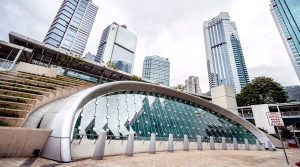Language
You can read the magazine in one of the following languages
Roger Bayliss saw his business vision start to take shape a little over 18 months ago. As Projects Director of MTR – a role he assumed in 2019 having rejoined the firm after a 15-year hiatus – he quickly identified a need for change. More pertinently, he identified an opportunity for MTR to improve, particularly through embracing digital and international ways of working.
With rail infrastructure projects scattered across the globe, MTR, and Bayliss personally, know a thing or two about multi-billion, multi-year enterprises. After all, MTR has been delivering such high-profile projects since 1975 when the Mass Transit Railways Corporation, as it was previously known, was formed.
Bayliss, meanwhile, has overseen many ambitious and highly successful projects, including the Ngong Ping 360 cable car project and the Tseung Kwan O extension during his first stint at MTR.
Yet even the most seasoned experts in their field must continue to evolve to maintain operational excellence, something Bayliss keenly subscribes to.
“Wasn’t it Heraclitus who three-and-a-half-thousand years ago said ‘the only constant in life is change’?” he says. “I’m a firm believer that we need to change, we need to constantly strive for improvement.”
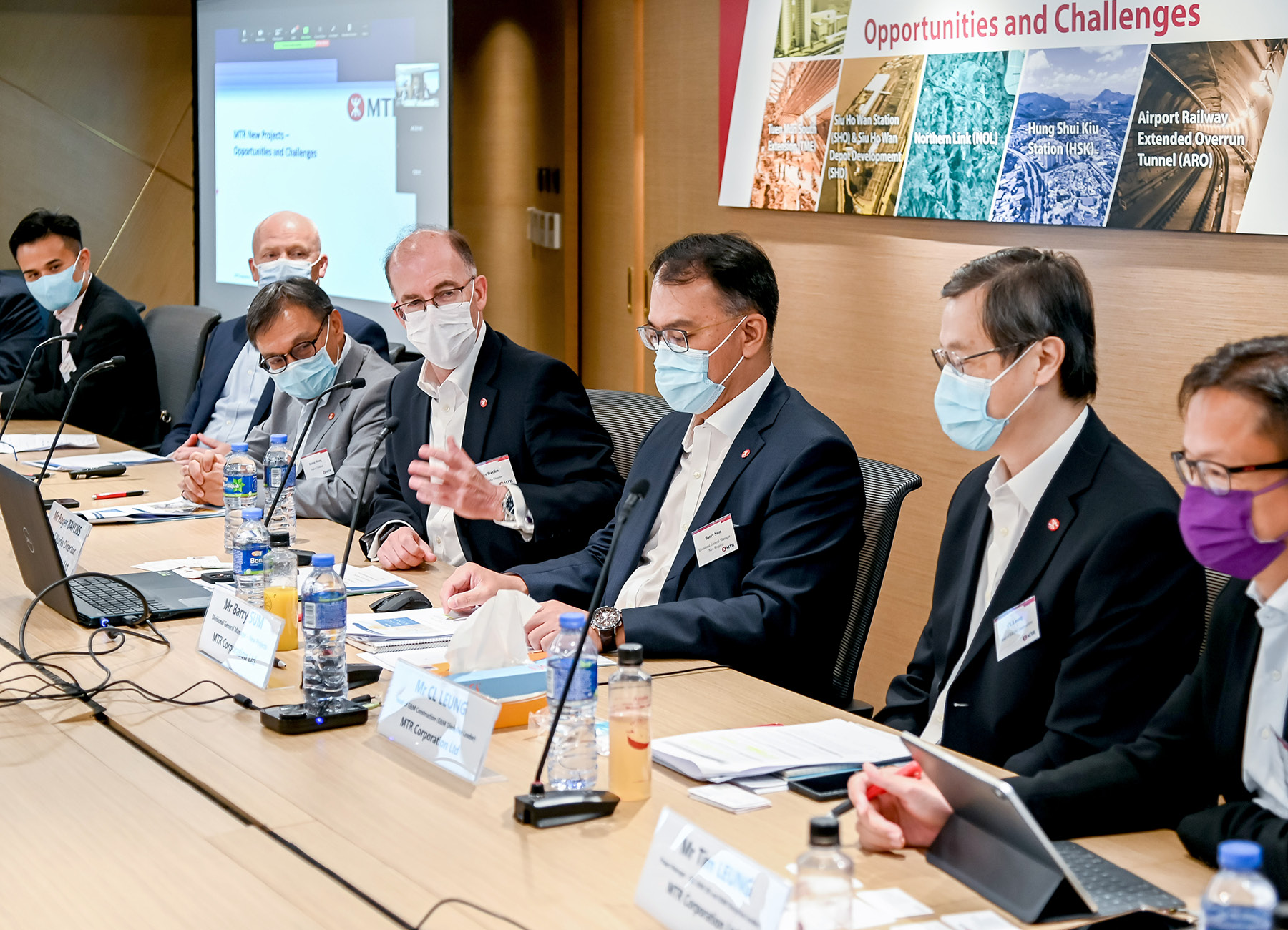
“The biggest source of failure with mergers and acquisitions is poor integration, but we got that right. I set up a small integration management team and we put a lot of effort into getting that right.”
To that end, Capital Works was born: a fusion of MTR’s Projects and Engineering divisions. A year and a half on, it’s still a work in progress. But the integration has been as smooth and effective as probably anyone dared hope. That, naturally, is not down to luck but to meticulous planning and strong leadership.
“The integration has gone really well,” Bayliss says. “I’m proud of what we’ve achieved. The biggest source of failure with mergers and acquisitions is poor integration, but we got that right. I set up a small integration management team and we put a lot of effort into getting that right.”
Some mergers also come loaded with emotional baggage. The legacy of the ‘old way’ can linger, damagingly so, with a tendency to view the past through rose-tinted spectacles.
At Capital Works, however, the past appears to be just that. “Nobody talks about the projects division or engineering division anymore,” Bayliss reveals.
“Now they only talk about the Capital Works business unit. We are CWBU and people are proud of it. We have established a Vision, a Mission and a set of Behaviours (VMB) we expect all to live by and even have souvenirs like Capital Works T-shirts, face masks and the like.”
At the core of the restructure was an aspiration and increasing need to more effectively manage MTR’s complex, intensive and ever-expanding workload.
Two major projects are already well established: the 1.3-kilometer Tung Chung line extension on Lantau Island and the 2.4-kilometer Tuen Mun South extension in the New Territories. Construction of both is due to start in 2023.
But several others are following with, Bayliss estimates, a combined value of around US$26 billion over the next 12 years. “On top of that there is expected to be some US$9 billion of projects renewing and upgrading the operating railway. That’s enough to keep anyone busy,” he adds wryly.

He explains that the creation of Capital Works was designed to provide a consistency of delivery across the many projects the company is juggling, both now and into the future.
“The challenge we have is the number of projects running in parallel ,” he says. “Building one big project is challenging in its own right, and these are complicated projects. But when you have a number all happening at the same time, that creates additional challenges.
“That was part of my thinking in setting up the Capital Works business unit. I didn’t want to run a project five times. I wanted to have an organisation that could run five projects at the same time.

“Building one big project is challenging in its own right, and these are complicated projects. But when you have a number all happening at the same time, that creates additional challenges.”
“Within Capital Works we have project delivery teams who are accountable for the delivery of the projects, and enabling functions who provide all the functional input and functional contributions. We’ve established that in a matrix-type environment such that within the project teams we embed people from the functions.
“The structure has been set up to support multiple projects. By doing what we have we ensure we have a higher degree of consistency. We have one way of doing things, there is a consistent culture and messaging to the supply chain; I think that’s extremely important.”
A consistent message is imperative when communicating with partners in the supply chain, particularly on works that are years in the making. “I don’t want contractors getting a project A message and a project B message, I want them to get a Capital Works message,” Bayliss emphasises.
More broadly, multi-year projects require investment, and not just of the financial kind. Investing in supplier relationships is something MTR has prided itself on for many years, and that remains as true now as it has always been.
The proactive nature of its communication starts with the procurement process itself where MTR aims to generate excitement about the projects while providing as much detail as possible to enable prospective partners to make informed judgements if they want in.
The engaged and open nature of the process continues through to the shortlist stage – typically consisting of two potential bidders where a two-stage tender is adopted. They are introducing a collaborative behavioural assessment to test the ability of the shortlisted tenders to work with MTR.
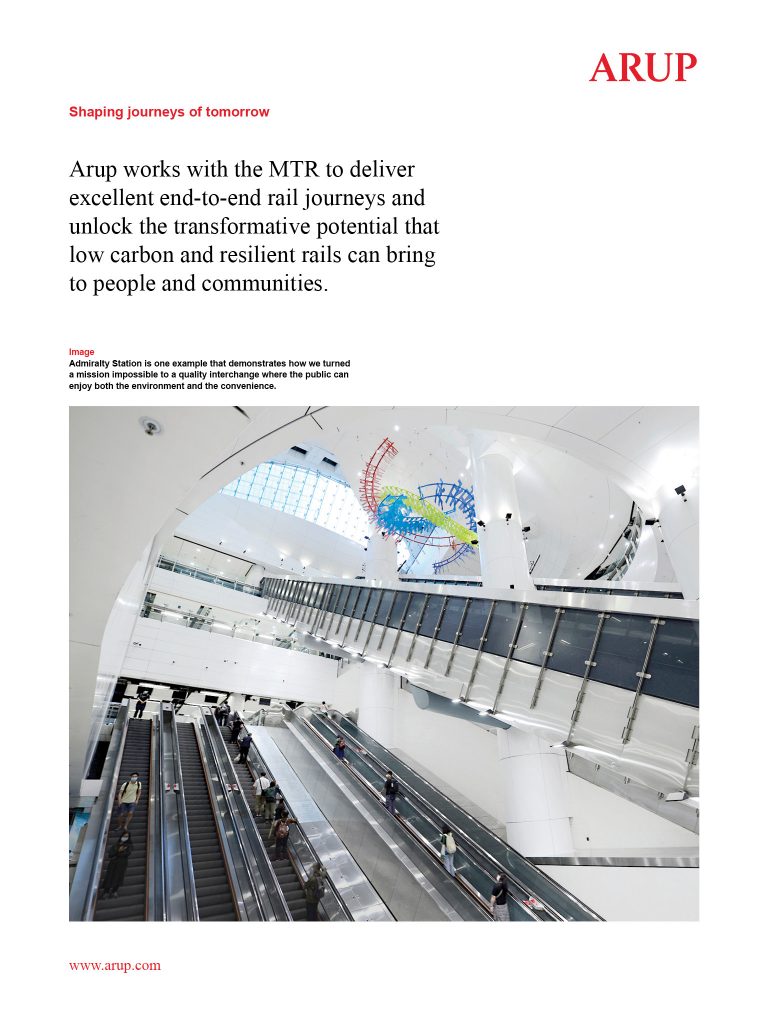
“It’s all designed to set the project up for success, with a lot of supply chain engagement,” Bayliss says. “If you have a transactional relationship that lasts a year, OK, fine, you don’t need to invest too much in the relationship.
“But if you’ve got a multi-year, long-term contract, you have to invest in the relationship. If you don’t, you deny yourself so much opportunity because the real challenge is not each other. The challenge is the project.
“So we’ve got to work together. And one of the real drivers for this collaborative working is to identify and drive out waste, because there’s a lot of waste in construction project interfaces.
“If we can find a way of working collaboratively, whereby we hold each other and ourselves to account, and we help each other to deliver what we’re each trying to deliver, we can take out a lot of that waste.”
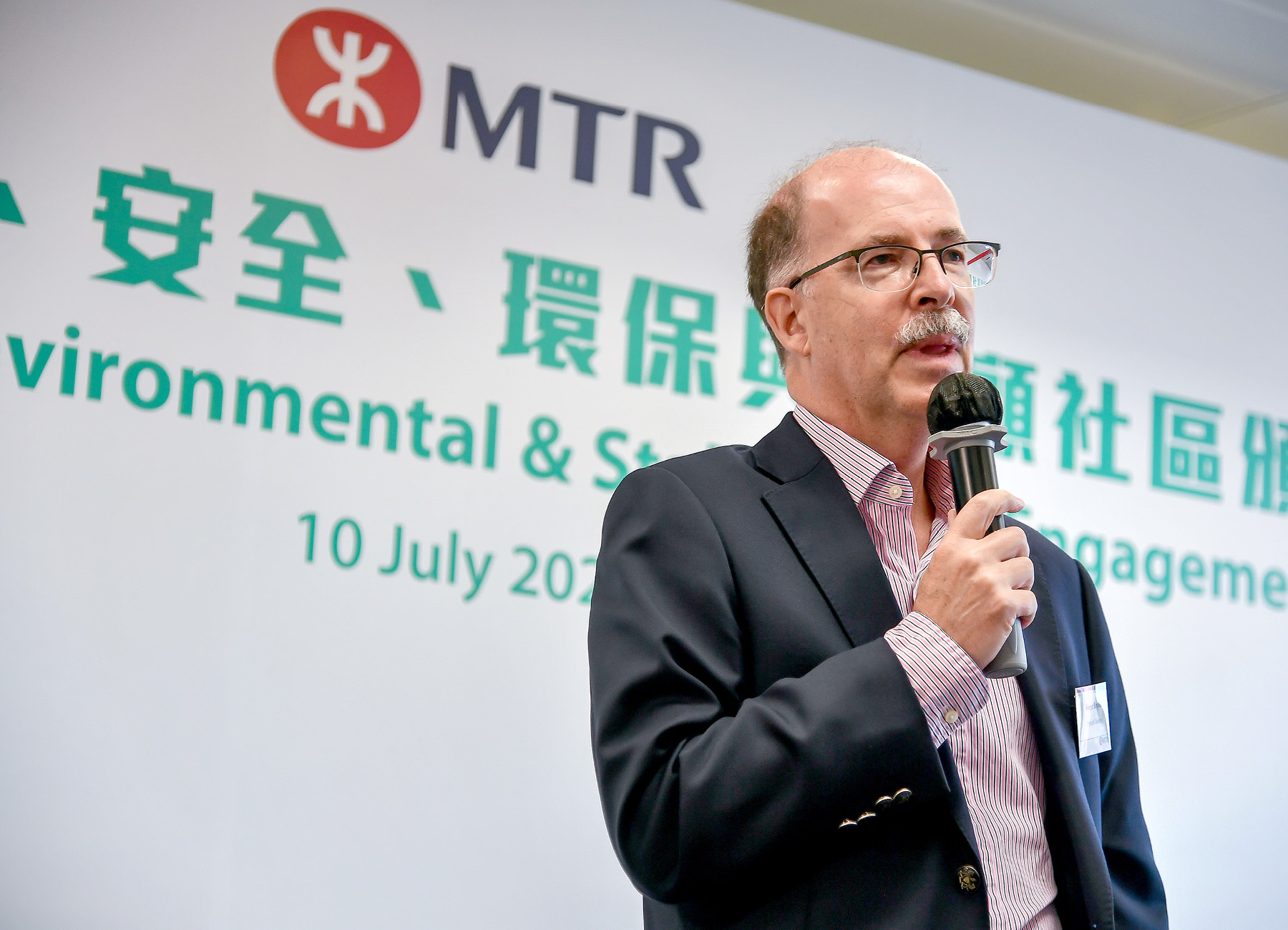
“If you’ve got a multi-year, long-term contract, you have to invest in the relationship. If you don’t, you deny yourself so much opportunity because the real challenge is not each other. The challenge is the project.”
While its interaction with the supply chain is a high priority for MTR, and one where it has traditionally excelled, there remains room for improvement. One particular area that needs strengthening, Bayliss concedes, is its strategic supplier engagement.
With many of the same suppliers returning time after time – “after all, there aren’t too many contractors in the world specialising in railway systems such as signalling,” he points out – there is room for more strategic relationships. MTR is currently exploring ways to achieve that aim.
“I don’t think we’re quite there yet, but we and our Hong Kong Transport Services business unit, the operator, are doing some work on that,” he says.
“The challenge with infrastructure is that you’re always building prototypes. Unlike the motor industry, for example, where you can drive costs out through economy of scale, you don’t get the benefit of repetition in typical construction projects. So we all need to put some more thought into that.”
Ultimately, in business, regardless of the sector or industry, companies are judged on results. In MTR’s case, when it comes to growth of the railway network, that’s the successful implementation.
Yet success, and the operational excellence that drives it, comes from within. It’s not just about process – culture is equally or even more important, Bayliss says. And that culture can manifest itself and be nurtured in various ways. Additionally, culture needs to be brought to life.
Within the Capital Works business unit, and across the wider company, employees are issued with a ‘VMB card’. As Bayliss explains, VMB aims to instil a shared culture, which is weaved into all communication.
“Culture is one of those soft things that people talk about but it needs bringing to life,” he says. “You have to live the culture, so everyone has a VMB card. I carry mine around in my wallet.”
Building on that, the firm has revamped its onboarding process with a “sustained program” of engagement and training, where expectations are clearly defined and articulated. New staff are given an ‘induction buddy’ to ease their entry into the business.
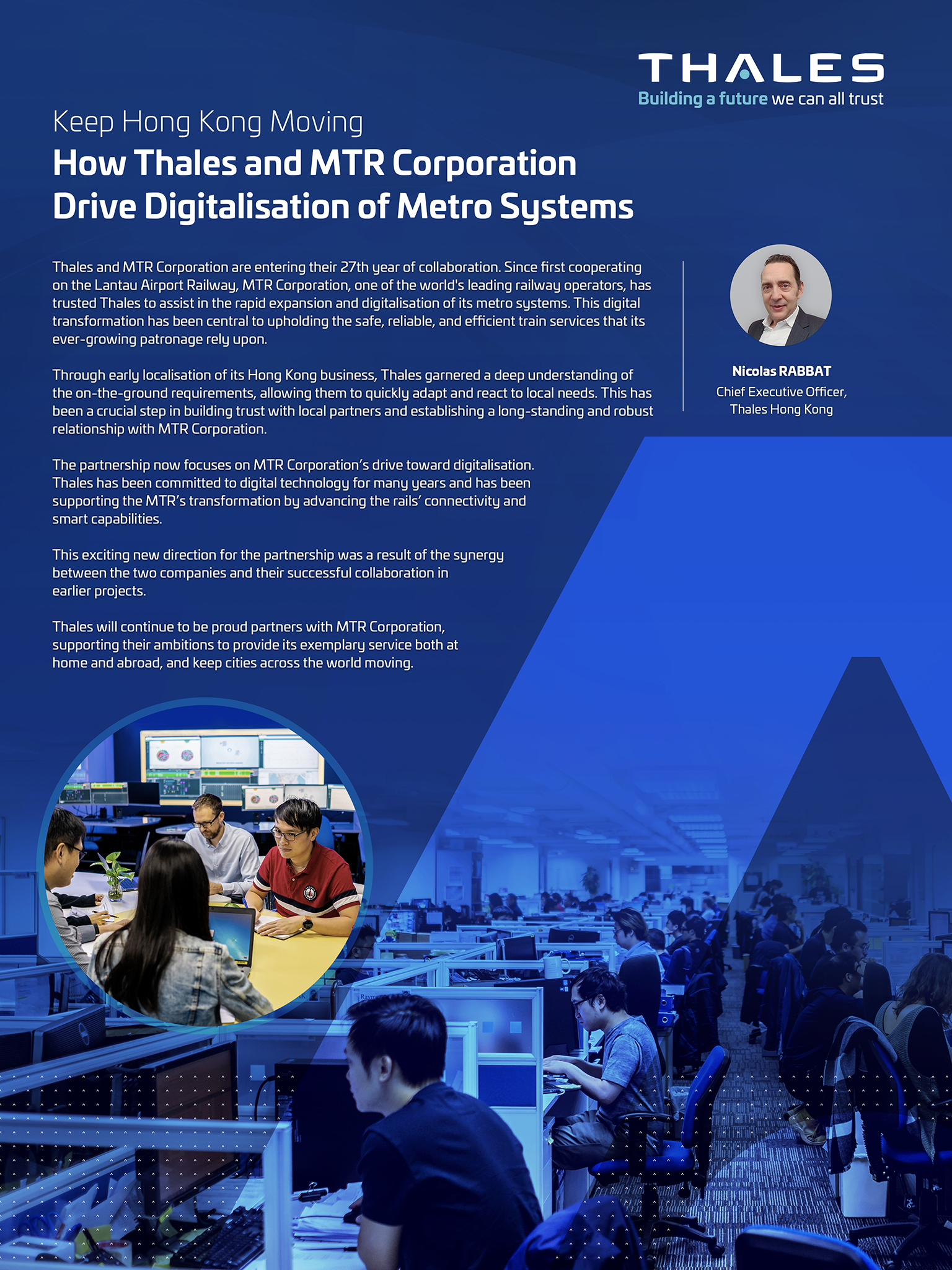
As Bayliss puts it, the Capital Works onboarding experience is “not just a sheep dip exercise”.
“Capital Works is probably going to double in size over the next three years or so we’re doing a lot of work on the people side of the business,” he says.
“Yes, we’re building railways, but we are also building careers. We’re trying to change the conversation with people so they don’t come to us for a short-term project, they come to build a career, and we will help them do that. We don’t simply hire mercenaries who come in, build a project and leave.”
At the end of the day, Bayliss adds, the rail infrastructure projects are not built for the benefit of the Corporation, they’re built for the people of Hong Kong. It is that sense of public service that Capital Works is trying to engender across its workforce.
“We are, however, still a commercial organisation. We still want to make sure we get a fair return for our efforts, but what we’re trying to do differently is give staff that sense of purpose, that sense of mission that we’re providing railways for the community,” he explains.
Despite the great strides the Capital Works business unit has taken over the past 18 months, Bayliss is too experienced an executive to believe the job is done. Nor is he taken in by the success.
When his positive contribution to the business is pointed out, he quickly jumps in. “But I can’t pretend to get it right all the time,” he stresses. “I think any leader can only do their best, and it’s not for me to judge. That’s for others.
“As a leader you have to set the direction, you have to provide that guiding star as to what we’re trying to achieve, and the Capital Works business unit has been mine. It was my concept, my vision, so I needed to explain it, articulate it and I’m really pleased with the way it’s been embraced by so many people.
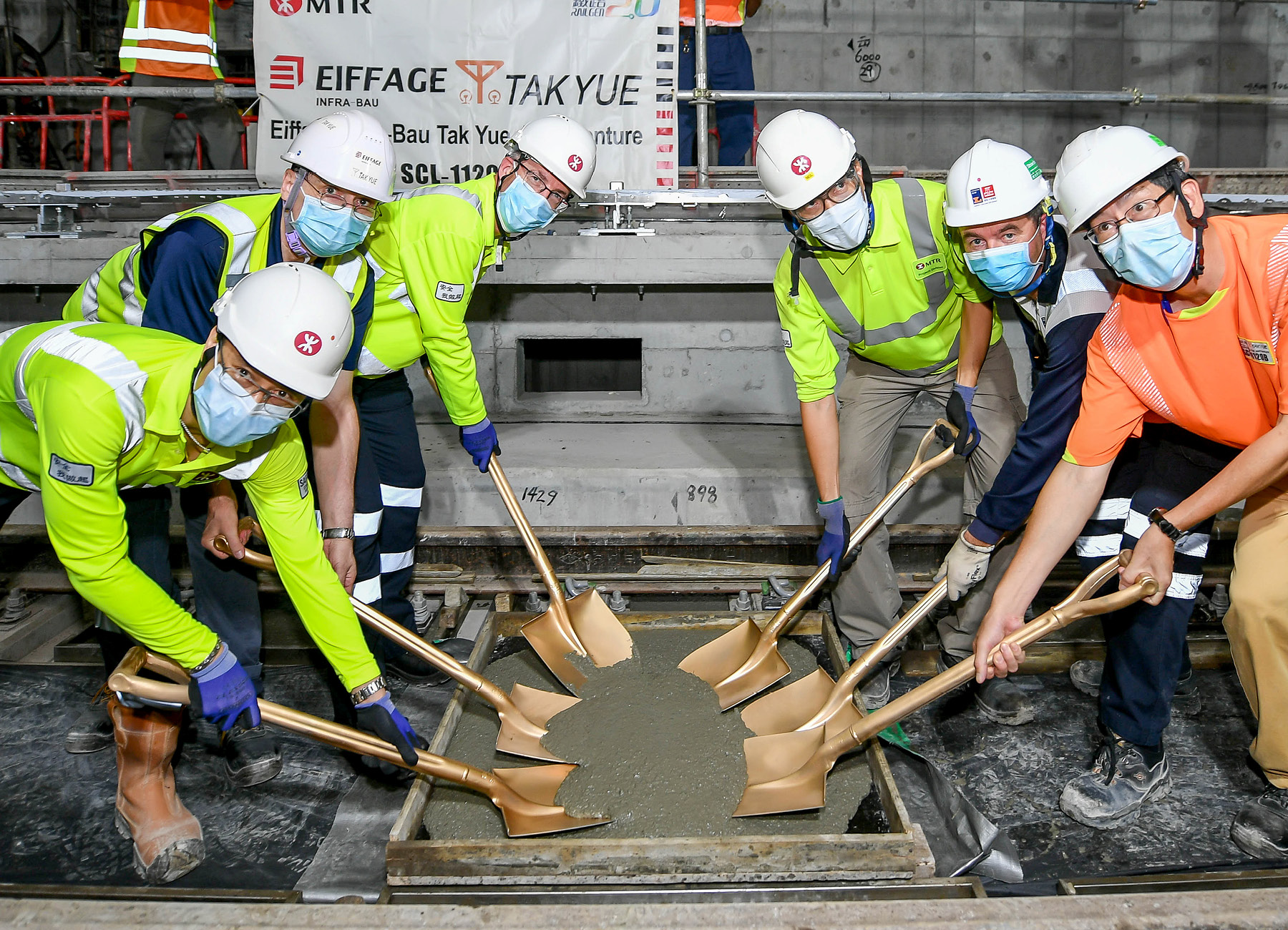
“As a leader you have to set the direction, you have to provide that guiding star as to what we’re trying to achieve.”
“But we’re not finished yet. There’s still more that we need to do to get a more fully inclusive way of working, where the functions and the delivery teams work closer together. But like a lot of these things, it takes a bit of time.”
Witnessing the tangible integration of the old Project and Engineering divisions is particularly satisfying, and testament to how the teams have embraced what Capital Works is trying to achieve.
“When you’ve got one of the functional guys within the project team and he’s driving things along you think, ‘wow, that’s fantastic!’ Similarly, when one of the project guys pays a compliment to the functional team, it’s great to see.
“You know, you can’t just flick a switch and all the lights come on. It’s like a dimmer switch that we’re turning up. They’re making good progress and it’s getting better all the time.”
He was also under no illusions that he would see Capital Works’ current suite of projects through to completion. On the contrary, he was acutely aware that he would, as he succinctly puts it, “be long gone” when the public enjoy the fruits of so many years’ labour.
To that end, he describes himself as a “leader of tomorrow”.
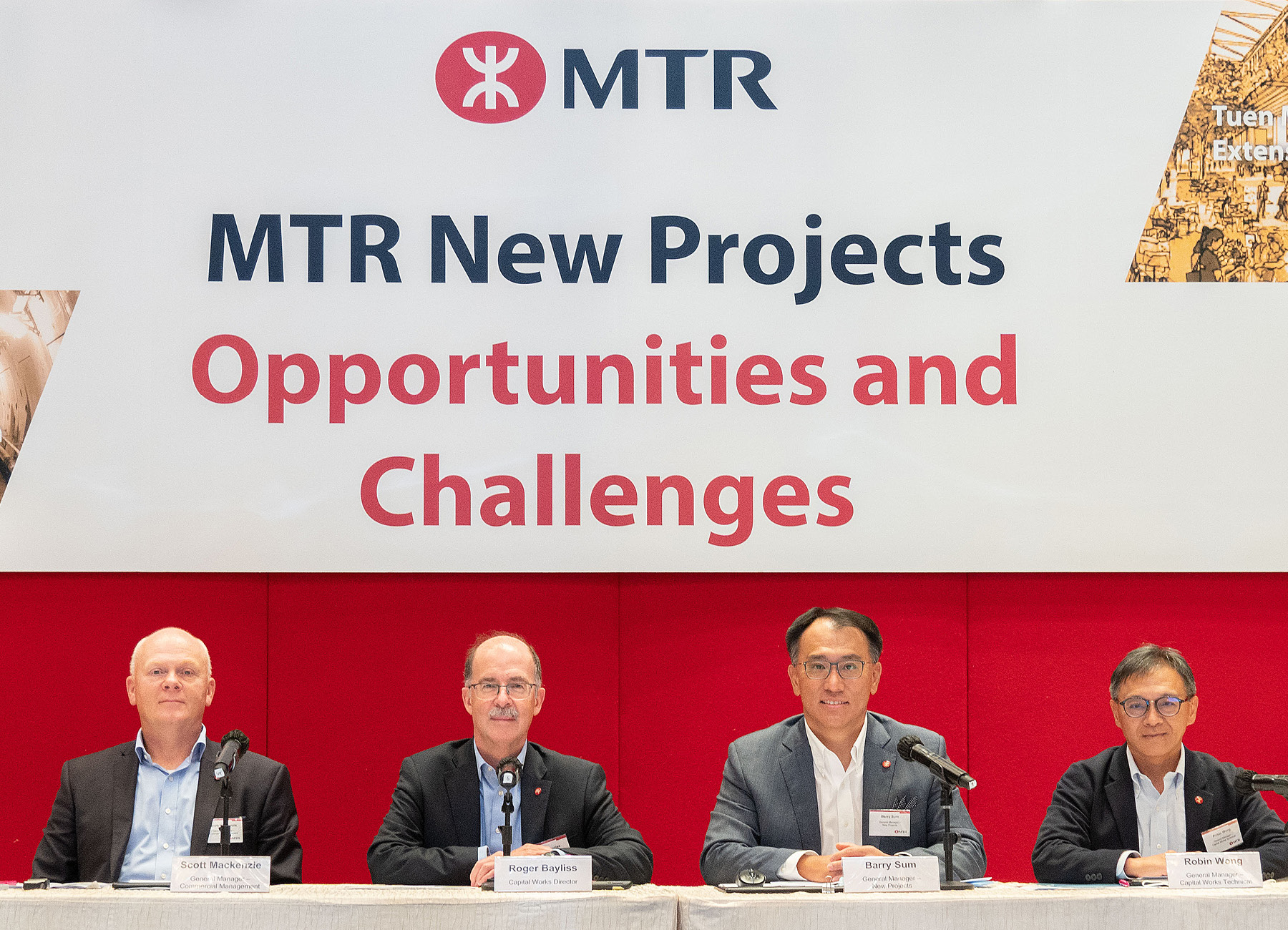
“What I’m trying to set up today is something that others will take forward. The success will ultimately be enjoyed not by me, but others. And that’s just fine.”
“I think it’s always important to realise that. Some leaders need to lead for today. If you’re in a crisis, you need to lead for today, and I had to do that when I first came back to MTR in 2019 because of the quality scandal issue. That needed what I call ‘leadership out of the packet’, or instant leadership,” Bayliss explains.
“But we got that situation under control and opened up the final stage of the Shatin to Central Link, to huge public acclaim, in May 2022. At the same time, we’ve been setting up for the future.
“And I know I won’t be here to cut the ribbon on these new projects. I’ll be long gone, because these projects are many years in the making. So, what I’m trying to set up today is something that others will take forward. The success will ultimately be enjoyed not by me, but others. And that’s just fine.”

